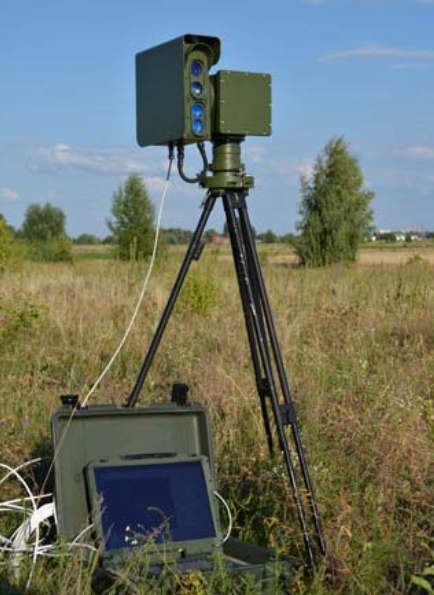
The most important developments for the revival and development of Ukrainian radiolocation were the creation of Doppler radars, previously not produced and not developed in Ukraine. The result was the creation of the smallest radar in the world for reconnaissance of ground, surface and air targets of the near zone. One of these stations was the “Badger” millimeter range radar.
“In view of the absence in Ukraine of Doppler radars intended for detection of ground moving objects, as well as the urgent need to protect infrastructure, the management of HC” Ukrspetstekhnika “decided to develop radar stations that would be safe for humans and Also time was guarded and discovered for civilian and military purposes – reconnaissance, protection of warehouses, etc. in conditions of reduced visibility. The work on the development of such stations was initiated in 2002, and two years later the first portable station “Barsuk” was adopted for the Armed Forces, “recalls the general designer of HC” Ukrspetstekhnika “Svetlana Koshevaya.
Patrol portable radar 112L1 “Badger” includes an antenna device, microwave transceiver, processing and control equipment, display means. The transmitter is solid-state, generates a continuous signal, modulated in phase with M-sequences, the transmitting antenna forms a narrow beam in space. Reception is carried out on a separate receiving antenna. The microwave receiver is built according to the superheterodyne scheme. Correlation and filter processing of signals takes place in the processing and control device.
The radar indicator screen displays information about the moving target in the form of a signal amplitude. Identification of the target – a person, a group of people, vehicles, animals – is carried out through the sound channel using headphones. As soon as moving targets appear in the radar’s area of responsibility, the target signs appear instantly on the monitor. In this case, data about them are automatically recorded in the form, indicating their number, range, azimuth and signs. All this is accompanied by a sound signal.
The light weight of the radar (5-6 kg) with the power supply allows the operator to carry it on his chest and inspect the viewing area by rotating his body. The instantaneous field of view of the radar corresponds to the field of view of the human eye, which simplifies orientation on the terrain. The station is convenient in the search and pursuit of violators by patrol in the absence of optical visibility, the transmitter with very low radiation power used in these radars makes it difficult to detect them, and the use of code manipulation makes the radar immune to interference and does not interfere with other radio equipment. This allows the radar to detect a person for 600-800 meters, and a car for 1600 meters. The deployment of this station with bringing it to fully working condition takes less than a minute.
“Badger” is produced in two versions – a portable kit for patrol missions as part of small mobile special groups, and stationary radar “Barsuk-A.” In a stationary and portable version, the radar mass is 5-6 kg, which allows it to be used to detect and prosecute saboteurs, terrorists, and other violators. Initially, the device was developed for the needs of the border guard service, but then the Armed Forces, who needed reliable and effective means of guarding military facilities – warehouses, bases, arsenals, permanent deployment units – also attracted interest. As a result, the worn version of “Badger” was adopted by the Armed Forces in 2004. However, the possibilities of using “Badger” went beyond the struggle against terrorism and crime. The conflict in the east of Ukraine, and its positional character, aroused a new wave of interest on the part of the security forces, as a result of which a stationary version, the Badger-A, was developed. This product was adopted in service in 2016, the declared need for troops was 800 units. This station is already installed on the rotary device and performs similar tasks of its predecessor.
In addition, it has the following features:
– color coding of targets with assignment of the number of each target;
– input of a digital map of the locality;
– the formation of control boundaries and exclusion zones;
– automatic issuance of an alarm signal in violation of control boundaries;
– documenting.
In the “Barsuk-A” radar, detection and identification of the target occurs in an automatic mode, while the monitor displays target marks, the data on which are automatically recorded in the form with their number, range, azimuth and trait (person-transport) linked to the map terrain. It is possible to select zones of blanking and zones of special attention – in this mode, the Badger concentrates the maximum “attention” on the approaches to the object where the penetration of the enemy is most likely, without leaving, however, the remaining areas without observation. Front-line needs have revealed new areas of application for the Badger – for example, the detection of enemy units and equipment on the approaches to checkpoints and positions of Ukrainian troops, especially in conditions of poor visibility and at night when the enemy is trying to stealthily approach positions in order to strike a sudden blow.
The material is posted with the kind consent of the information portal
opk.com.ua



